A Fusion of Literature and Nature: The Inauguration of National Tsing Hua University’s New Literature Building
2024.06.25

NTHU "Mo-Jen Wang & An-Yi Chou Literature Building" was inaugurated on June 25.
National Tsing Hua University (NTHU) in Taiwan celebrated the inauguration of the "Mo-Jen Wang (王默人) & An-Yi Chou (周安儀) Literature Building" by Acacia Lake(相思湖) on June 25. Designed by architect Sheng-Yuan Huang (黃聲遠) and inspired by tunnels and mines in Mo-Jen Wang's novel Lower Stratum《地層下》, this hidden gem will serve as a vital hub for promoting Taiwanese literature.
Architect Sheng-Yuan Huang aimed for a building that blended into its surroundings. "I'd rather it be formless, embracing the historical atmosphere without being a symbolic icon," said Huang. Surrounded by acacias, hollies, and chinaberries, the building naturally and seamlessly merges with the landscape.
Visitors can access the Literature Building from various points, as it is adjacent to the College of Humanities and Social Sciences and Acacia Lake. Huang hopes this tranquil space, filled with nature's sounds, will inspire creativity.
The NTHU administration stated that the Literature Building, along with the soon-to-be-completed Heritage Museum and Hong-Liang Art Museum on the Nanda campus, will form a continuous path, creating the most beautiful literary and aesthetic route at NTHU.
Building NTHU's Cultural Brand and Nurturing Young Writers
NTHU President W. John Kao (高為元) stated, "The literature building is not just a space for storing literary works; it's a dynamic environment where students and faculty can engage with each other, literature, and nature." He encourages the community to take a break from electronic devices and visit the literature building.
Cho-Ying Li (李卓穎), Dean of the College of Humanities and Social Sciences, stated that the building features an open theater for 80 people, exhibition rooms to house Mo-Jen Wang and An-Yi Chou's manuscripts, lecture halls, a library, meeting rooms, and a memorial garden, creating a fusion of literature and nature.
Yu-Ting Wang (王鈺婷), Director of the Institute of Taiwan Literature, outlined a long-term vision for international exchanges and local engagement, including writer-in-residence programs, celebrity lectures, youth workshops, and international literary exchanges.
Former NTHU President Hong Hocheng (賀陳弘) highlighted the university's deep literary roots, from Ziqing Zhu (朱自清) to Hu Shih (胡適). He expressed gratitude to Mo-Jen Wang and An-Yi Chou for their contributions to the new Literature Building, which will help ensure that NTHU's literary legacy continues to thrive.
Mo-Jen Wang: A Legacy of Integrity and Love for NTHU
The building was donated by novelist Mo-Jen Wang, also known as An-Tai Wang (王安泰), and his wife An-Yi Chou. Their writings, which focus on social contradictions and injustices in Taiwan's economic development, depict the struggles and resilience of the marginalized.
Mo-Jen Wang passed away three years ago in San Francisco. His ashes were recently returned to Taiwan and rest on Hsinchu's Eternal Hill. An-Yi Chou attended the inauguration ceremony, where she emphasized that while NTHU is known for science and engineering, Wang believed in the importance of literature.
In 2014, they donated $3.5 million to NTHU to establish the "Mo-Jen Wang & An-Yi Chou Literary Lectureship." Selling their retirement properties, they funded the construction of the Literature Building to fulfill Wang's vision.
Chou expressed her hope that the Literature Building would become a haven for literature enthusiasts and a gathering place for scholars and writers, hosting literary lectures for generations to come.
An-Yi Chou Launches New Book: Time Flows Like a River《追憶似水流年》
In conjunction with the inauguration, NTHU hosted the "Mo-Jen Wang Literary Symposium and An-Yi Chou New Book Launch." The NTHU library is also featuring a special exhibition titled "Light," which showcases the works of both Wang and Chou and highlights their literary contributions.
An-Yi Chou's new book, Time Flows Like a River, is a memoir that recounts significant challenges faced by the couple, including childhood polio, severe spinal displacement, and the political struggles that led them to the U.S., where they built a successful real estate business.
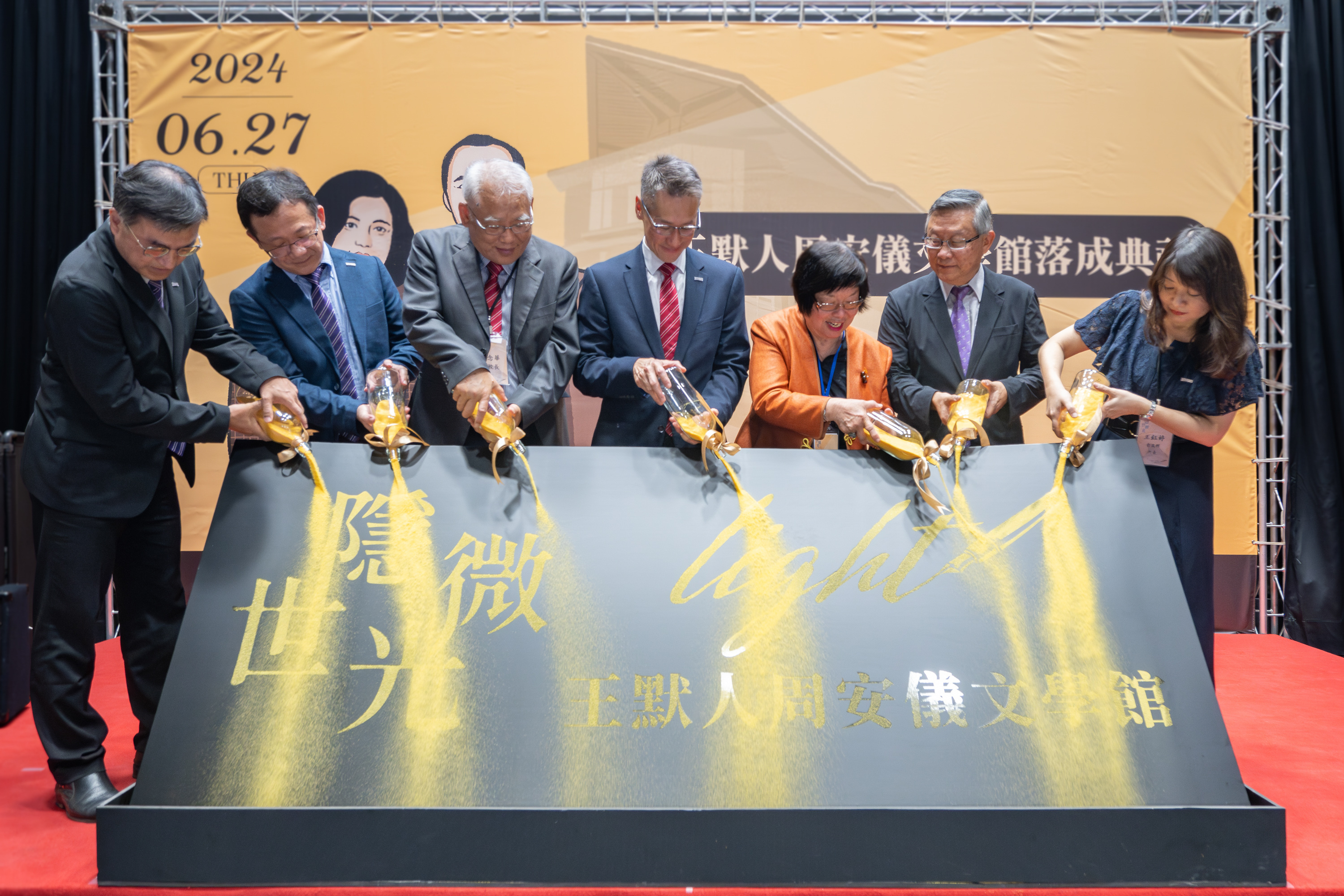
Ms. An-Yi Chou (周安儀), the building's supervisor and donor, declared its completion with a golden brushstroke. Pictured from left to right: Hsiang-Kuang Chang (張祥光), Chief of General Affairs; Cho-Ying Li (李卓穎), Dean of the College of Humanities and Social Sciences; Nien-Hua Tai (戴念華), Vice President; W. John Kao (高為元), President; Ms. An-Yi Chou (周安儀), donor; Hong Hocheng (賀陳弘), former President; and Yu-Ting Wang (王鈺婷), Director of the Institute of Taiwan Literature.
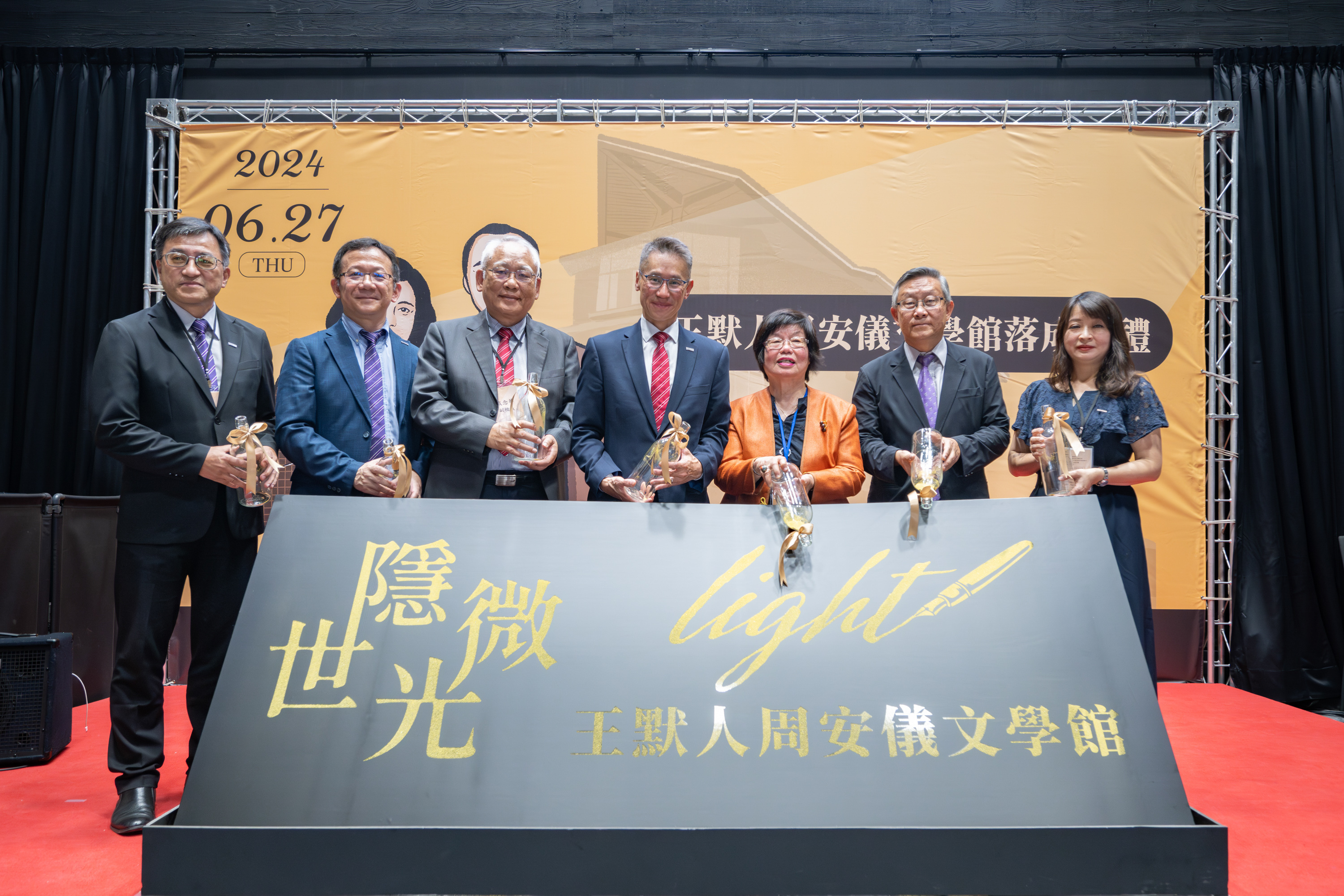
Ms. An-Yi Chou (周安儀), the building's donor, declared its completion with a golden brushstroke. Pictured from left to right: Hsiang-Kuang Chang (張祥光), Chief of General Affairs; Cho-Ying Li (李卓穎), Dean of the College of Humanities and Social Sciences; Nien-Hua Tai (戴念華), Vice President; W. John Kao (高為元), President; Ms. An-Yi Chou (周安儀), donor; Hong Hocheng (賀陳弘), former President; and Yu-Ting Wang (王鈺婷), Director of the Institute of Taiwan Literature.

Ms. An-Yi Chou (周安儀) hopes the Literature Building will become a home for all literature enthusiasts and a gathering place for scholars and writers.
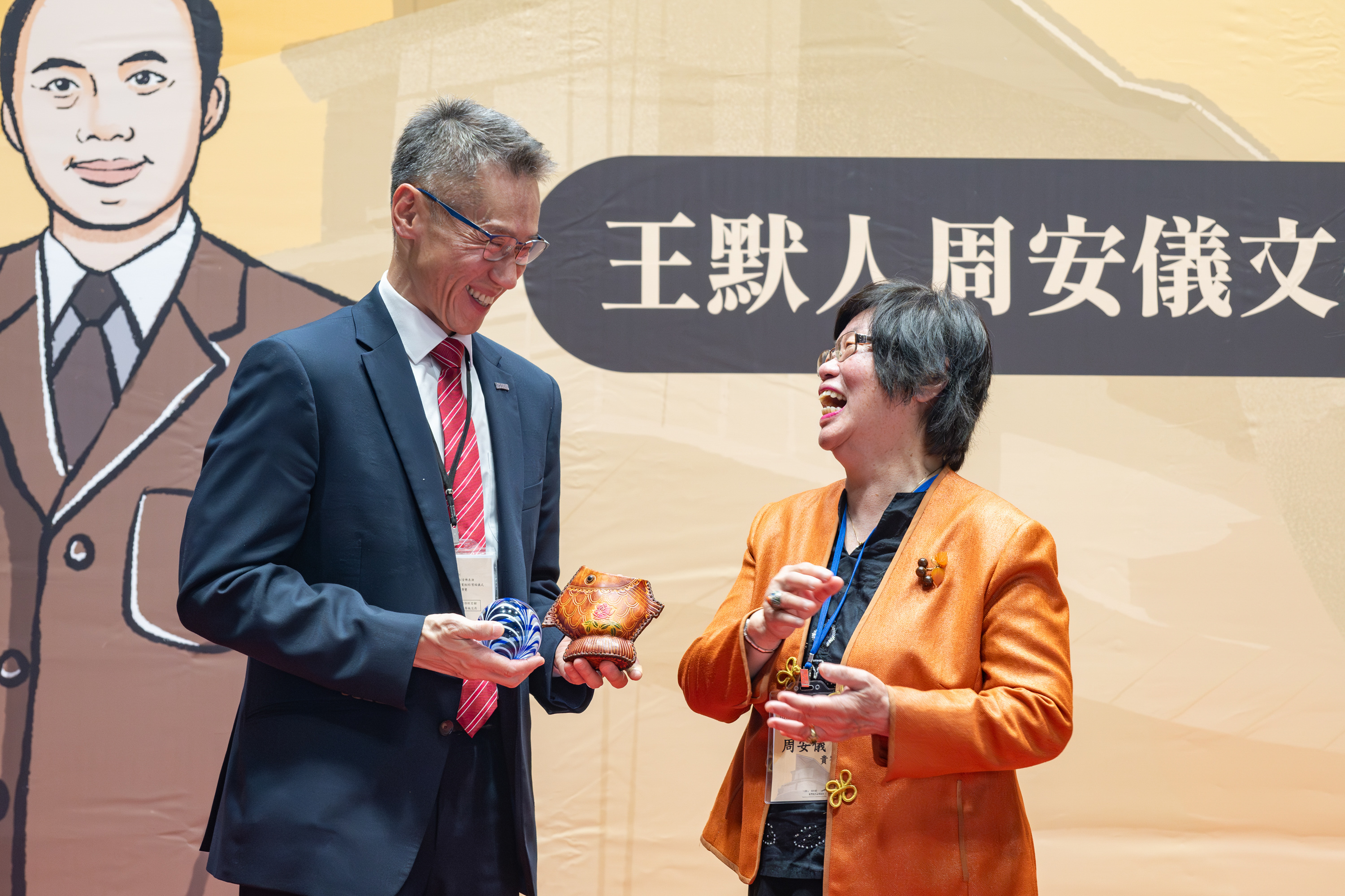
Ms. An-Yi Chou (周安儀) (right) presents a pen holder and a glass paperweight to President W. John Kao (高為元), expressing her wish that NTHU will prosper in its literary endeavors.

NTHU faculty and students celebrate the inauguration of the Literature Building.
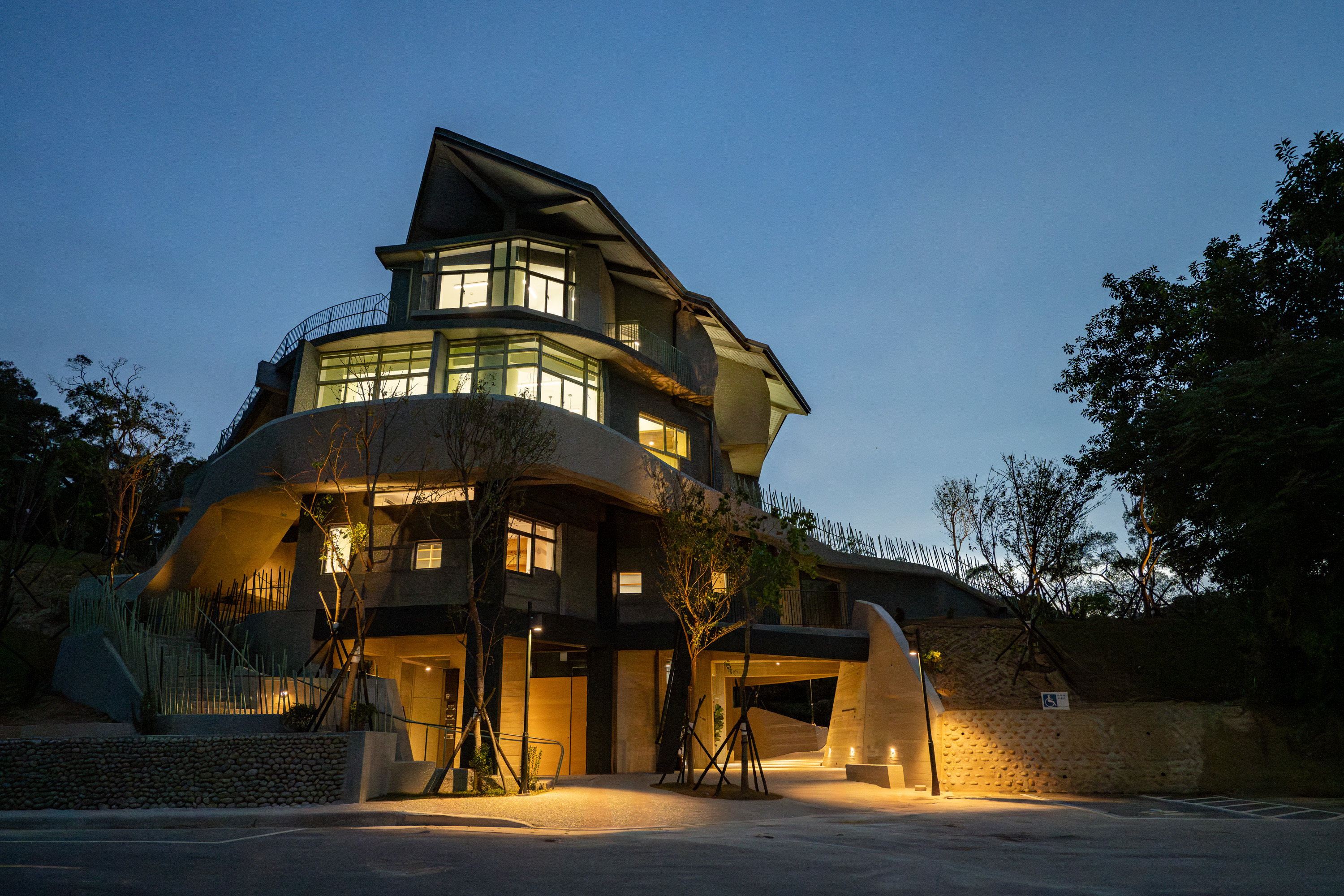
The Literature Building looks even more beautiful at night when illuminated.

Situated by Acacia Lake, the Literature Building is nestled amidst the mountains and forests.

The building features an open theater space that can accommodate 80 people.
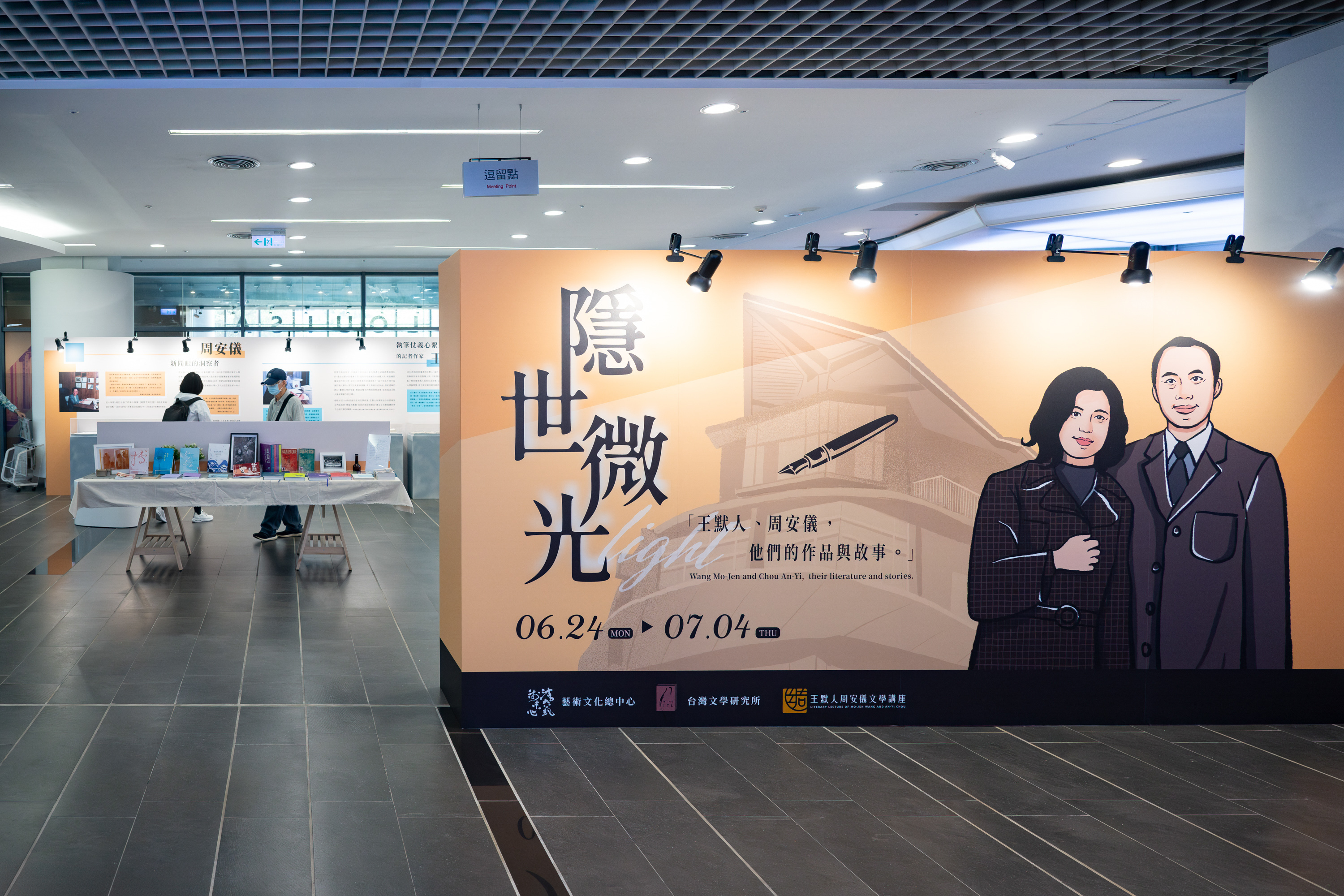
The Institute of Taiwan Literature hosts the "Light" special exhibition at the NTHU library, which showcases the journalistic and literary works of Mo-Jen Wang (王默人) and An-Yi Chou (周安儀).

Ms. An-Yi Chou (周安儀) gazes out over Acacia Lake from the third floor of the Literature Building.

Mo-Jen Wang (王默人) (right) and An-Yi Chou (周安儀) wrote tirelessly throughout their careers. This photo was taken in 1972.

Built along mountainous terrain, students and faculty can enter or traverse the Literature Building from the ground floor, first floor, or second floor.






